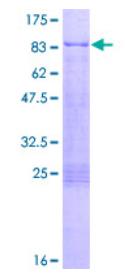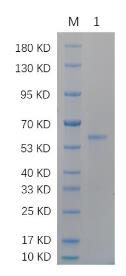ESR1
-
Official Full Name
estrogen receptor 1 -
Overview
This gene encodes an estrogen receptor, a ligand-activated transcription factor composed of several domains important for hormone binding, DNA binding, and activation of transcription. The protein localizes to the nucleus where it may form a homodimer or a heterodimer with estrogen receptor 2. Estrogen and its receptors are essential for sexual development and reproductive function, but also play a role in other tissues such as bone. Estrogen receptors are also involved in pathological processes including breast cancer, endometrial cancer, and osteoporosis. Alternative promoter usage and alternative splicing result in dozens of transcript variants, but the full-length nature of many of these variants has not been determined. [provided by RefSeq, Mar 2014] -
Synonyms
ESR1;estrogen receptor 1;ER;ESR;Era;ESRA;ESTRR;NR3A1;estrogen receptor;ER-alpha;estradiol receptor;estrogen nuclear receptor alpha;estrogen receptor alpha E1-E2-1-2;estrogen receptor alpha E1-N2-E2-1-2;nuclear receptor subfamily 3 group A member 1
Recombinant Proteins
- Human
- Mouse
- Rat
- Chicken
- Zebrafish
- Sf9 Cells
- E.coli
- Sf21 Cells
- Mammalian Cells
- Human Cells
- Insect Cells
- S.frugiperda
- Wheat Germ
- HEK293
- Yeast
- Insect cells
- In Vitro Cell Free System
- Non
- GST
- His
- Strep II
- MBP
- Avi
- DDK
- Myc
- Flag
- Fc
Creative BioMart
offers a variety of high-quality ESR1 recombinant proteins and related products to meet different
research needs. Our products include ESR1 proteins with different tags, specific mutants and
various purity levels to ensure that they can meet your experimental requirements. Whether you are
looking for high-purity proteins for biological activity studies or customized versions for
structural analysis, we can provide you with flexible solutions.
Our ESR1 protein products undergo strict quality control to ensure the activity and consistency of
each batch of proteins. Choosing our recombinant ESR1 protein can not only improve your
experimental success rate, but also accelerate your research process. Place an order now to
experience our high-quality products and professional services and take your scientific research
to the next level!
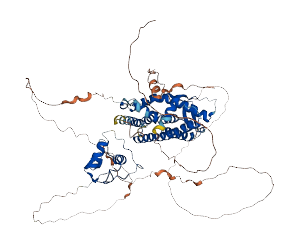
Background
Background of ESR1 Protein
-
Introduction to
ESR1
Gene
ESR1 , also known as estrogen receptor 1, encodes a ligand-activated transcription factor that is crucial for binding hormones, interacting with DNA, and activating transcription. The ESR1 protein is predominantly located in the nucleus, where it can form either homodimers or heterodimers with estrogen receptor 2. This receptor is fundamental in sexual development and reproductive functions and has roles in other tissues such as bone. The gene exhibits alternative promoter usage and splicing, resulting in multiple transcript variants.
-
Functions of ESR1 Protein
The ESR1 protein has diverse functions, acting as a transcription factor that binds sequence-specific DNA upon estrogen activation. It plays significant roles in ATPase binding and RNA polymerase II transcription factor activities. Furthermore, it contributes to chromatin binding, estrogen receptor activity, and steroid hormone receptor functions. Its ability to bind to estrogen response elements enables the regulation of genetic pathways which are essential for various cellular processes. The protein’s interactions with other molecules enhance its functional repertoire in gene expression regulation.
- Diseases Related to ESR1 Protein
Mutations and alterations in the ESR1 gene have significant clinical implications, particularly in breast cancer, where they can induce resistance to endocrine therapies, impacting treatment efficacy. ESR1 involvement in cancer extends to endometrial cancer and is implicated in osteoporosis. Testing for ESR1 mutations in clinical settings provides prognostic information, aiding in predicting responses to hormone therapies. Continuous research aims to develop targeted therapies for breast cancers harboring ESR1 mutations, showcasing the gene’s pivotal role in disease mechanisms.
- Applications of ESR1 Protein
In the research domain, ESR1 protein serves as a critical tool for investigating molecular interactions and elucidating biological mechanisms. It aids in drug development, especially in developing anti-cancer agents that target estrogen receptor-positive cells. Moreover, the protein is essential in diagnostic applications, where its status can be determined through immunohistochemistry or molecular testing to guide treatment decisions in oncology. The protein’s diverse functionalities enable it to support advancements in various scientific and therapeutic fields.
Involved Pathway
ESR1 involved in several pathways and played different roles in them. We selected most pathways ESR1 participated on our site, such as Estrogen signaling pathway, Prolactin signaling pathway, Thyroid hormone signaling pathway, which may be useful for your reference. Also, other proteins which involved in the same pathway with ESR1 were listed below. Creative BioMart supplied nearly all the proteins listed, you can search them on our site.
| Pathway Name | Pathway Related Protein |
|---|---|
| Estrogen signaling pathway | RAF1;PIK3R2;ATF4;PIK3CA;NRAS;CALM3;HSP90B1;GNAQ;FKBP4 |
| Prolactin signaling pathway | NEK3;MAPK3;MAP2K1;PPIB;SHC3;RELA;FOXO3;PIK3R5;MAPK11 |
| Thyroid hormone signaling pathway | KRAS;ACTB;SLC9A1;EP300;ATP1B4;SLC2A1;DIO1;MED12;PLCZ1 |
| Endocrine and other factor-regulated calcium reabsorption | PLCB2;KLK1B24;PRKCG;ATP1B1;PRKCA;KLK1B11;KLK1;FXYD2;KL |
| Proteoglycans in cancer | PIK3CB;ARAF;PIK3CG;MSN;NUDT16L1;VEGFA;PRKACG;IGF1;GAB1 |
Protein Function
ESR1 has several biochemical functions, for example, ATPase binding, RNA polymerase II core promoter proximal region sequence-specific DNA binding, RNA polymerase II transcription factor activity, estrogen-activated sequence-specific DNA binding. Some of the functions are cooperated with other proteins, some of the functions could acted by ESR1 itself. We selected most functions ESR1 had, and list some proteins which have the same functions with ESR1. You can find most of the proteins on our site.
| Function | Related Protein |
|---|---|
| ATPase binding | TOR1AIP2;SDF2L1;FBL;ANK2;SLC26A9;PGR;ATP6V0A2;DERL1;CAV1 |
| RNA polymerase II core promoter proximal region sequence-specific DNA binding | ARID3B;ZNF257;MYF6;TBX3;CHD7;ELF4;TFE3;SREBF2;HINFP |
| RNA polymerase II transcription factor activity, estrogen-activated sequence-specific DNA binding | ESR2B;ESR1;ESR2A |
| beta-catenin binding | CDH2;GLI3;TCF7L1B;DVL3;KDM6B;PTPRJ;C;DACT3;ASH2L |
| chromatin binding | CIC;RBMX;TPR;MEIS3;SP140;MAZ;MED1;NCOA1;NR5A1 |
| core promoter sequence-specific DNA binding | SOHLH1;TOP1;CREM;ZFP750;SOX9;PROX1;PPARG;SIRT1;NRF1 |
| enzyme binding | PRKCD;CASP2;UGT1A6A;KIAA1967;UGT1A2;TARBP2;RAC1;PARP4;KPNB1 |
| estrogen receptor activity | NKX3;ESR2;NKX3-1;GPR30;ESR1;LEF1;ESR2A;ESR2B |
| estrogen response element binding | TOX3;ESR2;TRIM24;ESR1 |
| identical protein binding | WRNIP1;SMAD3;DPP4;LDHB;HOOK1;DVL1;SERPINA1D;PTEN;SETX |
| nitric-oxide synthase regulator activity | CALM2;CALM1;HSP90AA1.1;AKT1;CALM3;HSP90AB1;HSP90AA1;ESR1 |
| protein binding | RAB9A;PPP1R15A;RABEP1;BAG4;CD8B;HTR3E;TLN1;KIAA0146;SHE |
| steroid binding | PGRMC2;PDIA2;HSD3B5;HSD3B4;HSD11B2;GPR30;PAQR5;PAQR8;CYP21A2 |
| steroid hormone receptor activity | RXRBB;RORAB;NR2C1;ESR1;NR4A1;NR2E3;PAQR7;NR5A2;RARB |
| transcription factor activity, sequence-specific DNA binding | BARX1;CNOT8;HOXA4A;GATA6;SOX2;PRDM1A;ETS2;TCF3A;EVX1 |
| transcription factor binding | FOXO1;PPP1R13L;PIAS1;GPX3;CEBPG;IRF4;ZFPM1;ATG7;UBN1 |
| transcriptional activator activity, RNA polymerase II core promoter proximal region sequence-specific binding | SOX9;GCM1;GLI3;BARHL2;PITX1;ETV6;FIGLA;FOSB;TFAM |
| zinc ion binding | CA3;RNF10;ZRANB3;PRICKLE1;RNF144A;RNF175;DTX2;PXN;RBM4B |
Interacting Protein
ESR1 has direct interactions with proteins and molecules. Those interactions were detected by several methods such as yeast two hybrid, co-IP, pull-down and so on. We selected proteins and molecules interacted with ESR1 here. Most of them are supplied by our site. Hope this information will be useful for your research of ESR1.
NCOA1; DDX5
ESR1 Protein Product Categories
Classification by Species
Our products can be classified according to species origin, mainly including recombinant proteins of human, mouse and rat species. Products of human origin are usually used to explore pathological mechanisms and therapeutic targets; products of mouse and rat are mainly used for animal model research. Products of different species origin provide researchers with diverse tools to meet different experimental needs and research goals.
Table1. Overview of Common Species Source.
| Human ESR1 | Mouse ESR1 | Rat ESR1 | Chicken ESR1 | Zebrafish ESR1 | |
|---|---|---|---|---|---|
|
Summary |
Research on disease models related to human health |
Pharmacological and genetic studies |
Neuroscience and toxicology research |
Research related to developmental biology and comparative biology |
Developmental biology, genetics and toxicology research |
|
Research Areas |
- Cancer research
|
- Gene function
|
- Tumor biology
|
- Embryonic development
|
- Gene expression
|
Classification by Source
The recombinant protein expression systems we provide mainly include expression systems for Escherichia coli, yeast, insect cells and mammalian cells. Recombinant proteins expressed by Escherichia coli usually have high yields and low costs, and are suitable for basic research and preliminary screening; the yeast expression system combines the post-transcriptional modification of eukaryotic cells and is suitable for studying protein folding and function. The insect cell expression system has complex glycosylation characteristics and is suitable for the production of biologically active proteins, especially in the fields of vaccines and biopharmaceuticals; while the mammalian cell system provides proteins that are closer to their natural state and are suitable for drug development and biomedical research. The choice of different expression hosts provides researchers with a variety of tools to meet various experimental and application needs. For more information on expression system selection, please click Protein Expression and Purification Services .
Classification by Tag
We can provide fusion proteins with different tags. Common tags mainly include His tags, GST tags, FLAG tags, etc. Different tags provide researchers with a variety of tools to optimize protein purification, detection and functional analysis to meet experimental needs. The following is a comparison of commonly used tags:
Table2. Overview of Common Tags.
| His | GST | FALG | Strep | MBP | |
|---|---|---|---|---|---|
|
AA Sequence |
HHHHHH |
MGSF (generally includes the sequence of GST protein) |
DYKDDDDK |
WSHPQFEK |
Usually the complete sequence of MBP protein |
|
Function |
Purification by nickel ion affinity chromatography, suitable for efficient separation of recombinant proteins. |
Purification was performed by glutathione affinity chromatography to enhance protein solubility. |
Used to improve protein identification and purification, suitable for immunoassays and precipitation experiments. |
Purified by Strep-Tactin affinity chromatography with high specificity. |
Increase solubility to facilitate purification and subsequent functional studies. |
Classification by Gene Sequence
We provide recombinant proteins expressed in different gene sequence lengths. The differences in the lengths of these gene sequences usually reflect the different needs of proteins in functional research and applications. Short-fragment genes are suitable for constructing expression vectors or conducting gene knockout studies, which facilitate rapid screening and verification; while complete gene sequences are used for functional analysis and protein interaction studies, providing an in-depth understanding of biological functions. Through gene sequences of different lengths, researchers can choose appropriate products according to specific experimental goals, thereby optimizing research results.
Quality Guarantee
High Purity
Case Study
- Case 1: ESR1-12557H ; GST-tag; amino acids 65-280 of human ESR1
This article studies the role of estrogen receptor α (ERα) in neuroprotection and
neuroregeneration. Studies have shown that changes in ERα expression after nerve injury are
closely related to the survival and repair of nerve cells.
In the article, the researchers used recombinant ERα protein to conduct a series of experiments,
including evaluating the effects of ERα on nerve cell survival under different conditions, and its
regulation of the expression of apoptosis-related proteins. Through these experiments, the
researchers explored the key role of ERα in estrogen-mediated neuroprotection mechanisms,
providing new insights into its function in the nervous system.
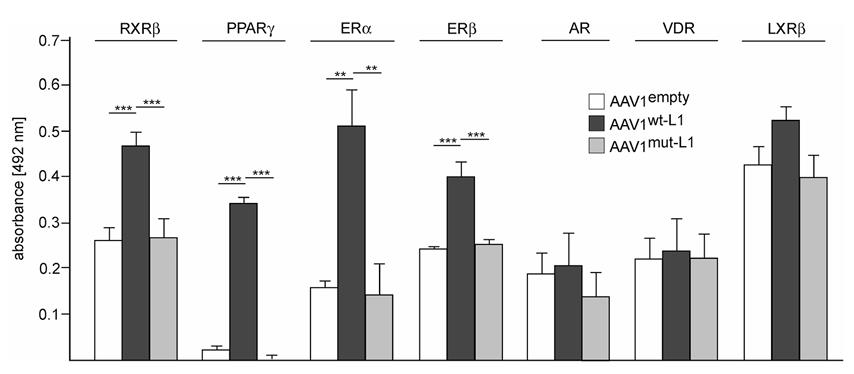
Fig1. Nuclear L1 interacts with nuclear receptors. (Kraus, et al. , 2018)
- Case 3: ESR1-1033H ; His-tag; full-length human ESR1
This article studies the role of the recombinant protein ESR1 (estrogen receptor α) in
intracellular signal transduction and gene regulation. The researchers explored the function of
ESR1 in estrogen signal transduction through cell experiments, including transfection experiments,
gene expression analysis, and signal pathway detection.
The application of ESR1 in this study is mainly reflected in its role as an estrogen receptor,
which regulates the expression of target genes by binding to estrogen, affecting cell
proliferation and survival. These findings help to clarify the mechanism of action of estrogen in
related diseases (such as breast cancer) and provide important scientific basis for further
research and treatment strategies.
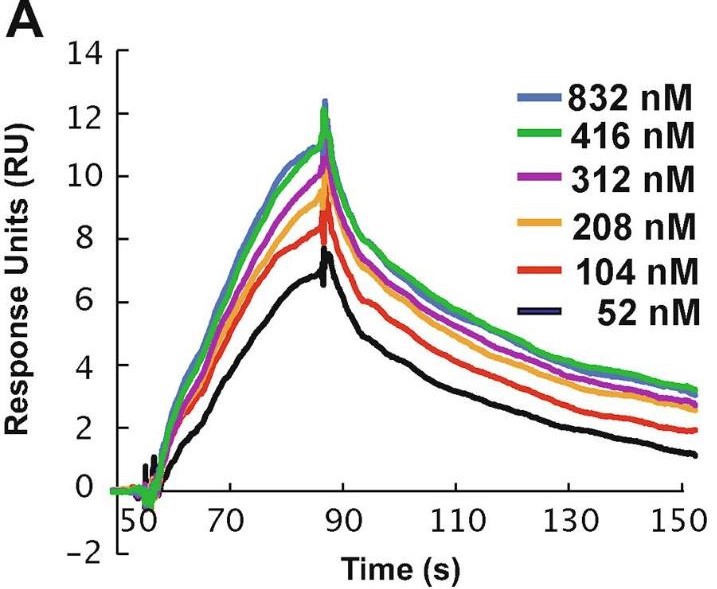
Fig3. SPR sensorgrams showing the dose-dependent binding of ketamine (52–823 nM) to ERα. (Ho, et al. , 2018)
- Case 2: ESR1-1033H ; His-tag; full-length human ESR1
This article studies the efficacy of the drug Anastrozole in patients with estrogen receptor α
(ERα)-positive breast cancer, focusing on the association between ERα expression levels and
clinical outcomes. The study found that the expression level of ERα was correlated with the
patient's response to Anastrozole, suggesting the importance of ERα in the treatment effect.
In the article, experiments were performed using recombinant ERα protein to evaluate the effects
of different concentrations of Anastrozole on ERα, including analyzing how the drug regulates ERα
function by detecting ERα's transcriptional activity and binding ability. These experiments helped
researchers understand the mechanism of action of Anastrozole and provided insights into its
potential biomarkers for clinical use.
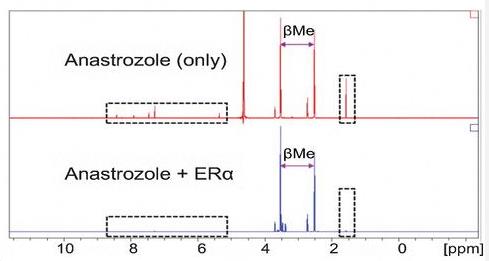
Fig2. Anastrozole binding of ERα detected by nuclear magnetic resonance (NMR) spectroscopy. (Ingle, et al. , 2020)
Features and Advantages of ESR1 Protein
-
Activity and Purity
Activity and purity are two key parameters when studying and applying the recombinant protein ESR1. For the recombinant protein products we provide, activity evaluation methods usually include biological activity detection and binding affinity determination, such as evaluating its binding affinity with estrogen through competitive binding experiments; commonly used purity detection methods include SDS-PAGE and Western Blot experiments. In addition, the purity standard varies depending on the purpose of use. High-purity ESR1 protein (such as ≥95%) is suitable for structural and functional studies, while medium-purity (such as ≥85%) proteins can be used for preliminary screening or large-scale production applications. Choosing the right purity level can ensure the reliability and repeatability of experimental results, thereby promoting the progress of related research.
-
Stability and Storage
The stability of the ESR1 protein is an important factor affecting its experimental results. Before sale, we will conduct stability testing, which usually includes evaluating the activity retention of the protein under different temperature, pH and storage conditions. Studies have shown that ESR1 can effectively maintain its activity when stored under frozen (-80°C) conditions. It is usually recommended to use a buffer containing glycerol for storage to prevent protein aggregation or denaturation. In addition, it can be stored at 4°C for short-term use, but it is recommended not to exceed one week. To ensure the reliability of the experiment, researchers should regularly test the activity and integrity of the protein to ensure that it is in good condition before use.
-
Quality Control
To ensure the consistency and high quality of the recombinant protein ESR1, we applied a variety of quality control measures. These included analyzing the molecular weight and purity of the protein using SDS-PAGE and confirming the integrity of the protein by electrophoretic separation. Secondly, the protein was further purified and identified using high-performance liquid chromatography (HPLC) to ensure the stability of its chemical properties. In addition, enzyme-linked immunosorbent assay (ELISA) was used to quantitatively detect the activity and concentration of ESR1. Together, these detection methods constitute a comprehensive quality control system that not only ensures the standardization of each batch of products, but also enables the timely detection and correction of possible production problems, thereby ensuring the reliability and effectiveness of the final product.
-
Customized Services
If you do not find a recombinant protein product that meets your research needs in the product list, we provide the following customized services to help you find a recombinant protein that better suits your experimental purpose. The detailed services are as follows:
Table3. Overview of Customized Services.
| Custom Expression Service | Mutation and Modification Services | Mass Production Services | |
|---|---|---|---|
|
Summary |
Customers can specify specific amino acid sequences, host cells (such as E. coli, yeast, mammalian cells, etc.), and tag types (such as His tags, GST tags, etc.). |
Customers can request mutations of specific amino acids to study their role in protein function, stability or interactions. Or specify chemical modifications such as phosphorylation and glycosylation, which are essential for mimicking physiological states and exploring the functional regulation of proteins. |
Whether you need a small sample for preliminary experiments or large-scale production to support further research and applications, we can flexibly meet your requirements. |
|
More can be found at |
Ordering and Delivery
When ordering recombinant protein products, customers need to prepare the following information: the name and specifications of the required product, the delivery address, contact number, and payment information. The overall process generally includes selecting products, adding to the shopping cart, registering or logging into an account, filling in order information, selecting a payment method, and confirming the order. The whole process usually takes 40-70 minutes, and the delivery time is 2-7 days. During this process, customers may encounter problems such as incorrect information filling, payment failure, or product out of stock. It is recommended to check carefully when filling in the information. If you encounter payment problems, you can try to change the payment method; if the product is out of stock, customers can contact us to learn about alternative products or estimated replenishment time to ensure the smooth completion of the order.
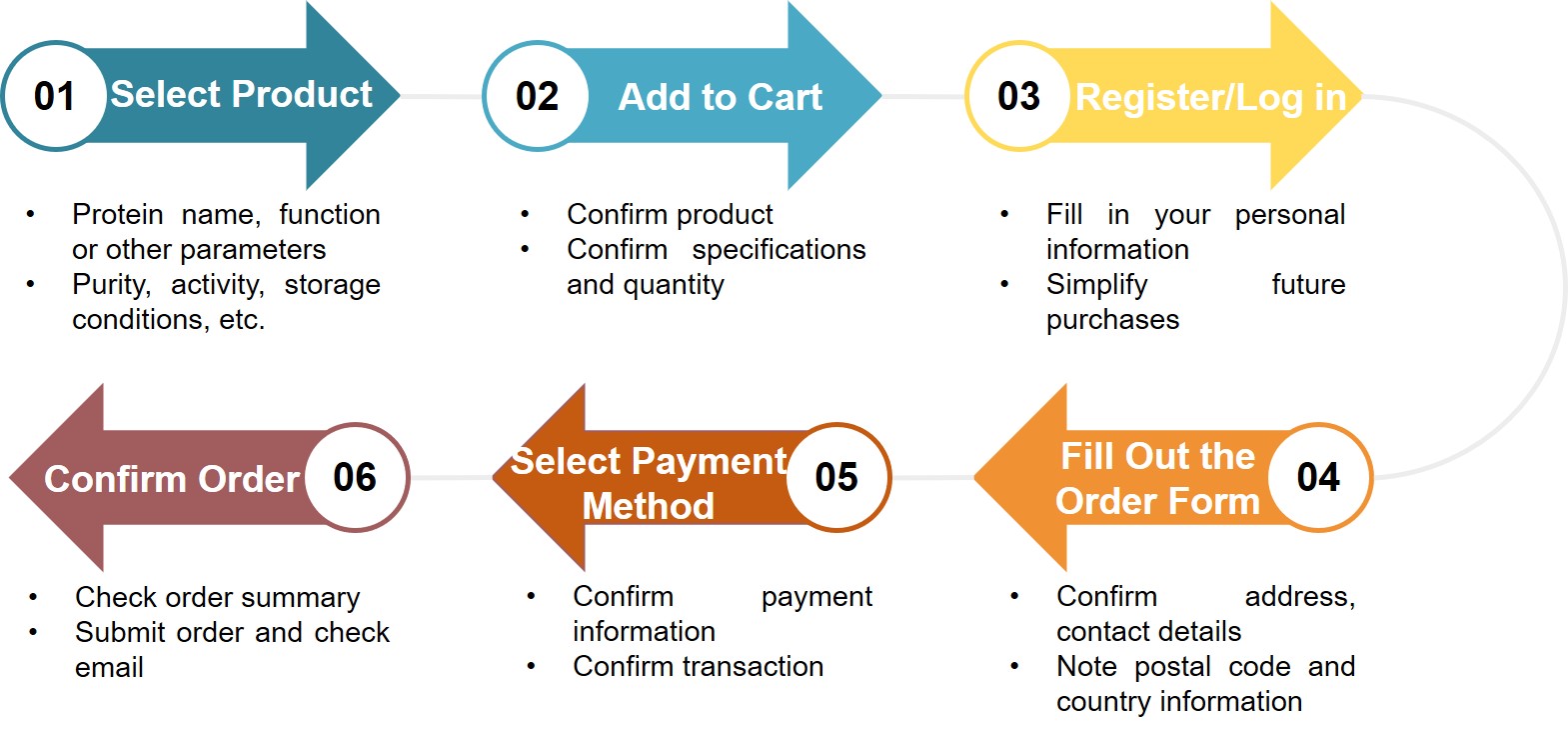
Resources
Research Area
Related Services
Related Products
References
- Kraus K.; et al. A Fragment of Adhesion Molecule L1 Binds to Nuclear Receptors to Regulate Synaptic Plasticity and Motor Coordination. Mol Neurobiol. 2018;55(9):7164-7178.
- Ingle JN.; et al. Anastrozole has an Association between Degree of Estrogen Suppression and Outcomes in Early Breast Cancer and is a Ligand for Estrogen Receptor α. Clin Cancer Res. 2020;26(12):2986-2996.
- Ho MF.; et al. Ketamine and ketamine metabolites as novel estrogen receptor ligands: Induction of cytochrome P450 and AMPA glutamate receptor gene expression. Biochem Pharmacol. 2018;152:279-292.
- Yu, T; Zhou, ZC; et al. A novel anti-cancer agent, acetyltanshinone IIA, inhibits oestrogen receptor positive breast cancer cell growth by down-regulating the oestrogen receptor. CANCER LETTERS 346:94-103(2014).
- Pogue-Geile, KL; Kim, C; et al. Predicting Degree of Benefit From Adjuvant Trastuzumab in NSABP Trial B-31. JNCI-JOURNAL OF THE NATIONAL CANCER INSTITUTE 105:1782-1788(2013).


